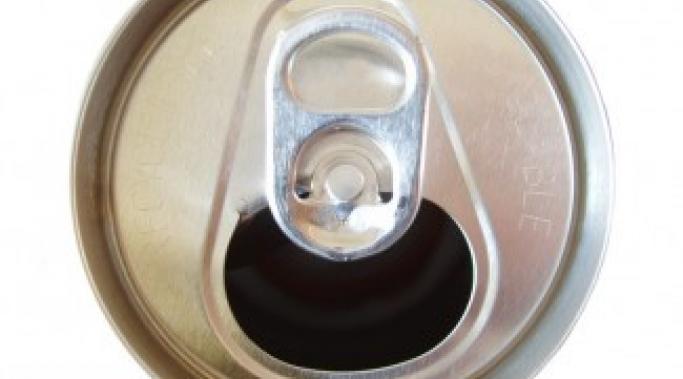Blogs
I'm acting in a play called "Nobody Needs to Know." In one scene, a recovering alcoholic explains that she once thought alcohol--vodka in particular--was the answer to her psychiatric symptoms. When another character asks why it isn't the answer, she gives several reasons why it isn't. Here are three reasons I've learned as to why alcohol isn't the answer to borderline personality disorder (BPD).
In the last six years since the start of my eating disorder recovery, I've been pretty diligent in trying to make an effort not to skip meals along with the inevitable emotions that will surface at times when I interact with food. However, lately with the stress of an active lifestyle, I have found it harder to remember to enjoy and relax while eating, as it feels like it takes away time from other important things. Realizing that this could lead to falling into old patterns, I recently decided to take a mindfulness workshop whose topic was the art of eating with a clear mind, three times a day.
Like I’ve said in previous blogs, pets and animals truly are therapeutic. Animals can show the most genuine compassion for their owners and even towards complete strangers. For some, pets may be the only ones in their life who listen to the struggles they’re going through and even though they don’t respond, they physically are able to show they care. The presence of a pet's compassion can decrease self-harm urges.
In fourth grade, I was blessed with a calico cat named Fudge. She had been the independent, somewhat shy cat out of the two my sister and I were given. However, she always slept beside me at night and made some sort of noise when someone walked into the room. During the years I struggled with self-harm and suicidal ideations, she was there to listen and for me to cry to.
I’m not sure about the rest of you, but when I first got into the field of psychology, I was overwhelmed with all of the information I had to learn about the different types of mental health therapies that are used (Depression Therapy: How Psychotherapy for Depression Works). I had always thought that the counseling process was much simpler; you had a problem, you went to a counselor for help, you laid on a couch while they asked you a lot of questions, and then, voile, after a number of sessions you were done.
However, there I sat in one of my first classes with words and terms, such as client-centered, CBT, or eclectic approach, being thrown at me and I had no idea what they were talking about. Turns out that there is much more to the counseling process than many might think. Not only are there different types of mental health therapy, but some methods work better in certain cases than others. Who knew?
Every day brings new challenges and opportunities. Many of us fall for the false belief that if the day started out badly or something messed with your confident mindset, then the rest of the day or week will bring more unhappiness. Rather than challenging the negative mindset, we let it consume our confidence. Instead of allowing these moments to crush your confidence, use this awesome technique to fight back and push yourself into a more positive place. When you take even the smallest step towards talking back to negative beliefs, you make strides in your self-confidence.
The routine merges the cycle of violence and abuse phases of the honeymoon and tension-building, and it develops over a period of time. Typically we see the routine only in long-term abusive relationships because it enables both victim and abuser to manage their diseased relationship without expending as much emotional, mental, or physical energy as they did when the relationship was new. (The routine is also covered in this post on the routine and cycle of violence and abuse.)
In addiction treatment, one of the concepts that gets tossed around a lot is that of the "lizard" or "reptilian" brain. It comes from the triune brain model set forth in the 1960s by American neuroscientist Paul MacLean. According to this model, human brains comprise the most advanced product (thus far) in mammalian evolution, sharing some properties with our evolutionary ancestors. We have essentially three parts:
The reptilian complex (basal ganglia)
The paleomammalian complex (limbic system)
The neomammalian complex (neocortex)
As it relates to addiction, the idea is that addicts are engaged in a struggle between their reasoning (neocortex) on the one hand and their instinctual, compulsive reptilian brain on the other.
The list of people associated with the word beauty or beautiful is long and distinguished. As human beings we tend to be enamored with physical beauty. The popular media floods us with endless images of men and women who fit the sociocultural essence of beauty. Every year, People Magazine even dedicates an entire issue to the “50 Most Beautiful People in the World.” Sensationalism of beauty simply intensifies stress rather than deepens satisfaction with self.
We all have days where we feel a rush of emotions. When we feel frustrated, depressed or angry, we tend to take out our frustration on ourselves or on those we love. We don’t mean to become defensive or hurtful, it just happens without thought. For those who struggle with mental illness, holding back these behaviors can take time and practice and is definitely not easy. It isn’t easy to stop the urge to self-harm when triggers are coming at you from every angle.
Sometimes, the negative people around you are those triggers.
I know that, to some individuals, it may be hard to believe that anyone who has had thoughts about ending his or her own life may not meet the requirements needed to be admitted into an inpatient mental health program. However, there is a distinct difference between suicidal thoughts and being actively suicidal (Going From Suicidal Thoughts To A Suicide Attempt). Individuals who are actively suicidal have actually taken steps to end their own lives and may have plans laid out. On the other hand, those with suicidal ideation tend to just have fleeting thoughts about taking their own lives, but no real plan.










I believe she will only be able to rid herself of her demons, and hopefully her BPD as well, when she's ready to confront the abuse of her father. If she can put the blame where it belongs, she may stop projecting that victim/perpetrator cycle on the present men in her life. These demons are a metaphor for the purgatory she has created for herself. That reality has consequences in the real world, but it need not be real in the tangible sense. Exorcising her demons will require the expenditure of real physical energy and probably the destruction of aspects of her personality. If this ever happens, and it's possible but not probable, then these demons will evaporate. They are only as real as one's personality is real. In short, reality is not the question, it's what you make of the things you feel to be real.